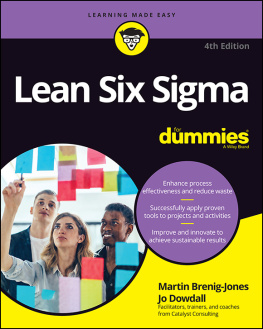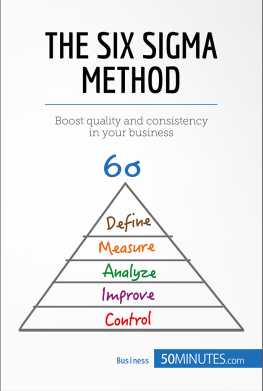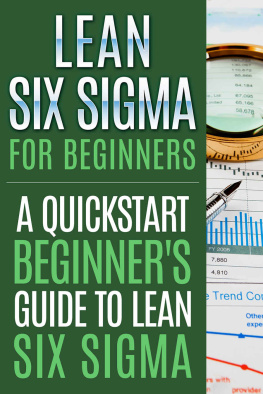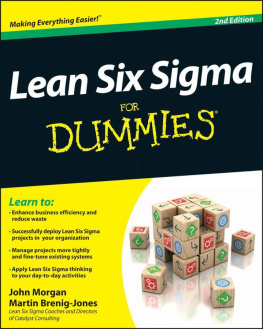
Copyright 2006 by McGraw-Hill Education. All rights reserved. Except as permitted under the United States Copyright Act of 1976, no part of this publication may be reproduced or distributed in any form or by any means, or stored in a data base or retrieval system, without the prior written permission of the publisher.
ISBN: 978-0-07-178603-4
MHID: 0-07-178603-1
eBook conversion by codeMantra
Version 1.0
All trademarks are trademarks of their respective owners. Rather than put a trademark symbol after every occurrence of a trademarked name, we use names in an editorial fashion only, and to the benefit of the trademark owner, with no intention of infringement of the trademark. Where such designations appear in this book, they have been printed with initial caps.
McGraw-Hill Education eBooks are available at special quantity discounts to use as premiums and sales promotions or for use in corporate training programs. To contact a representative, please visit the Contact Us page at www.mhprofessional.com.
This publication is designed to provide accurate and authoritative information in regard to the subject matter covered. It is sold with the understanding that neither the author nor the publisher is engaged in rendering legal, accounting, futures/securities trading, or other professional service. If legal advice or other expert assistance is required, the services of a competent professional person should be sought.
From a Declaration of Principles jointly adopted by a Committee of the American Bar Association and a Committee of Publishers
TERMS OF USE
This is a copyrighted work and McGraw-Hill Education and its licensors reserve all rights in and to the work. Use of this work is subject to these terms. Except as permitted under the Copyright Act of 1976 and the right to store and retrieve one copy of the work, you may not decompile, disassemble, reverse engineer, reproduce, modify, create derivative works based upon, transmit, distribute, disseminate, sell, publish or sublicense the work or any part of it without McGraw-Hill Educations prior consent. You may use the work for your own noncommercial and personal use; any other use of the work is strictly prohibited. Your right to use the work may be terminated if you fail to comply with these terms.
THE WORK IS PROVIDED AS IS. MCGRAW-HILL EDUCATION AND ITS LICENSORS MAKE NO GUARANTEES OR WARRANTIES AS TO THE ACCURACY, ADEQUACY OR COMPLETENESS OF OR RESULTS TO BE OBTAINED FROM USING THE WORK, INCLUDING ANY INFORMATION THAT CAN BE ACCESSED THROUGH THE WORK VIA HYPERLINK OR OTHERWISE, AND EXPRESSLY DISCLAIM ANY WARRANTY, EXPRESS OR IMPLIED, INCLUDING BUT NOT LIMITED TO IMPLIED WARRANTIES OF MERCHANTABILITY OR FITNESS FOR A PARTICULAR PURPOSE. McGraw-Hill Education and its licensors do not warrant or guarantee that the functions contained in the work will meet your requirements or that its operation will be uninterrupted or error free. Neither McGraw-Hill Education nor its licensors shall be liable to you or anyone else for any inaccuracy, error or omission, regardless of cause, in the work or for any damages resulting therefrom. McGraw-Hill Education has no responsibility for the content of any information accessed through the work. Under no circumstances shall McGraw-Hill Education and/or its licensors be liable for any indirect, incidental, special, punitive, consequential or similar damages that result from the use of or inability to use the work, even if any of them has been advised of the possibility of such damages. This limitation of liability shall apply to any claim or cause whatsoever whether such claim or cause arises in contract, tort or otherwise.
To my wife Lois and my two children. They have
never faltered in believing in me as I approached
different challenges in life, including becoming an
author. Belief in someone is a wonderful gift.
CONTENTS
PREFACE
W hen I was getting my GE training in Six Sigma, there was an outside consultant teaching one of the Six Sigma tools, and it seemed that he was making it more complicated than required. After a few days of training, I asked him if some simplifications wouldnt be valid, with no loss of tool utility. He laughed, said he agreed, and even offered some thoughts on how the subject could be simplified even further than what I had suggested. I was taken aback with this answer and asked why, since he felt that way, he wasnt teaching a more simplified approach. His answer was that because he had his Ph.D. in mathematics, was an author of a book on the subject, and was being paid a lot of money by GE, he felt that the depth and complexity he was presenting was expected.
Since most of the existing books on Six Sigma were written by people similar to the instructor mentioned above, with very specialized and esoteric knowledge in their own academic fields, much of Six Sigma is presented in a more complex format than is really required.
Six Sigma enables companies to reduce costly defects. It uses data and logic to drive process improvements and to measure success. Although most Six Sigma work has been in manufacturing, Six Sigma is generic and has shown success in virtually any area that has quality issues.
This book demystifies Six Sigma. Although Six Sigma is being used in many companies, it is generally thought of as being complex and bureaucratic, requiring confusing software and statistics. This image is exacerbated by the acronyms and confusing terms used to describe the Six Sigma process. Even its title is misleading: Six Sigma is often defined as having a goal of 3 defects per million. As you will discover later, 3 defects per million is 4.5 sigma, not six sigma.
Six Sigma is similar to earlier quality programs such as Total Quality Control (TQC) and ISO 9000. The biggest differences are that Six Sigma is packaged better, is tied closely to bottom-line profits, and has gotten a high degree of support from top levels of management. In fact, GEs autocratic CEO Jack Welchs insistence on its use at GE did more to get Six Sigma recognized than any other contributing factor.
One misconception about Six Sigma is that every element of Six Sigma is complicated, requiring highly trained experts to implement. Not true! Many of the Six Sigma tools are straightforward and require no statistics. These tools are grounded in common sense and are structured to assist implementation. In fact, in this text the first 14 chapters require no probability or statistics.
Even when statistical work is needed to validate process differences or product changes, the statistical tools require no more math than what most people get in high school. However, this type of math is not used much in daily life, so some review and simplification are needed. Chapters requiring statistics have practical practice problems with detailed steps. The 10 formulas and 4 tables included in this book are all someone need to be able to do the statistics required for the Six Sigma work described here. Microsofts Excel has all the needed software.
Many of the Six Sigma tools in this text are labeled as simplified. This simplification does not reduce their effectiveness; it just puts a degree of reality into the tools. In all cases I give reasons for the simplifications and give reference texts for those wishing to use the traditional nonsimplified tools.
Most books on Six Sigma are just an overview, with little detail on actually using Six Sigma. All About Six Sigma, in contrast, takes the reader through the Six Sigma tool details and required statistics so that he or she can quickly apply Six Sigma to real-world problems.
Next page






